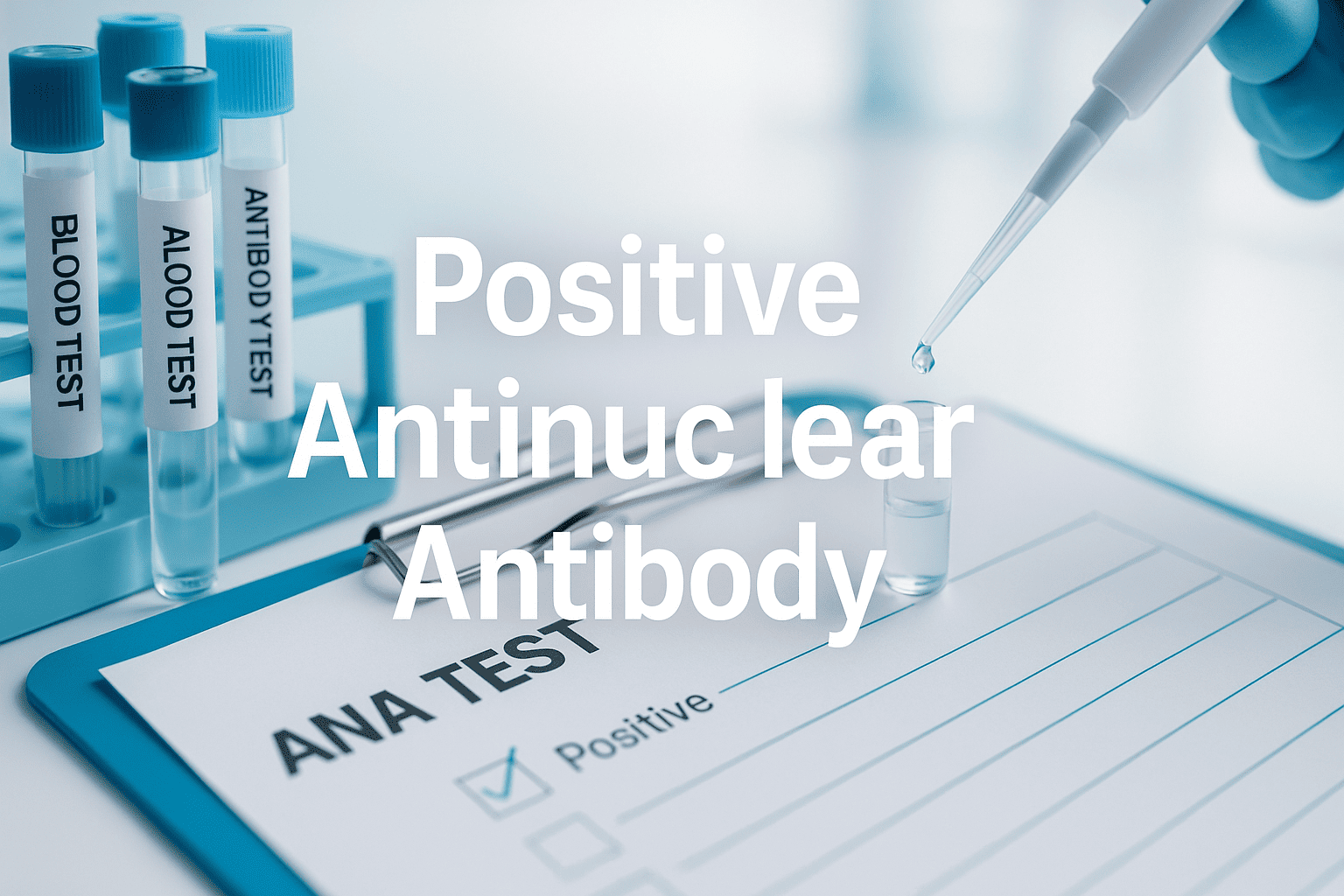Updated on: July 29, 2025
A positive antinuclear antibody (ANA) test often serves as the first red flag for possible autoimmune diseases such as lupus (SLE), Sjogren’s syndrome, or mixed connective tissue disorder (MCTD). However, interpreting and coding a positive ANA result requires nuance—especially when the patient has no definitive autoimmune diagnosis yet.
In ICD-10-CM, R76.0 and R76.8 are used to document abnormal serological findings, including ANA positivity. This blog helps clinicians and coders determine which code to use, when to transition to definitive diagnoses, and how to ensure accurate documentation in both outpatient and specialty settings.
What is an ANA Test?
The antinuclear antibody (ANA) test detects autoantibodies that target substances within the cell nucleus. While not disease-specific, a positive ANA is highly sensitive for autoimmune conditions, especially:
-
Systemic Lupus Erythematosus (SLE)
-
Rheumatoid Arthritis (RA)
-
Scleroderma
-
Sjogren’s Syndrome
-
Polymyositis/Dermatomyositis
-
Mixed Connective Tissue Disease (MCTD)
Understanding ICD-10 Codes: R76.0 vs. R76.8
| ICD-10 Code | Description | When to Use |
|---|---|---|
| R76.0 | Raised antibody titer | When ANA or other antibody titers are elevated but no final autoimmune diagnosis is made |
| R76.8 | Other abnormal immunological findings in serum | For abnormal immunologic labs not clearly classifiable under other codes |
✅ Use R76.0 when:
-
The ANA titer is positive or elevated
-
There is no formal autoimmune disease diagnosis
-
The patient is under evaluation for autoimmune or connective tissue disorder
✅ Use R76.8 when:
-
Other immunological labs (e.g., positive anti-Ro/SSA, anti-dsDNA, or low complement levels) are abnormal but not yet linked to a confirmed diagnosis
-
You’re documenting abnormal serologic results as part of a diagnostic workup
⚠️ Avoid these codes if a definitive autoimmune diagnosis exists—in that case, code the actual condition (e.g., M32.9 for SLE).
SOAP Note Example – Positive ANA, Awaiting Diagnosis
S: “Patient reports ongoing fatigue, joint pain, and intermittent low-grade fever. Symptoms present for 3 months.”
O: ANA titer 1:640, speckled pattern. ESR elevated at 45. Normal CBC and CMP. No prior autoimmune diagnosis.
A: Positive ANA serology without definitive autoimmune disease.
Codes: R76.0 (raised antibody titer), R76.8 (other abnormal immunological findings)
P: Refer to rheumatology. Repeat ANA profile with dsDNA, SSA, SSB, and complement testing. Consider prednisone trial if inflammatory markers rise.
Common Lab Values Associated with R76.0 / R76.8
| Test | Typical Result | Relevance |
|---|---|---|
| ANA (titer and pattern) | Positive, e.g., 1:320+ | Supports autoimmunity workup |
| Anti-dsDNA | May be positive | Highly specific for lupus |
| Anti-Ro/SSA, Anti-La/SSB | May be positive | Suggestive of Sjogren’s or SLE |
| Complement (C3/C4) | Low | Marker of disease activity in lupus |
| ESR / CRP | Elevated | Reflects systemic inflammation |
Clinical Scenarios That Warrant R76.0 or R76.8
-
Primary care follow-up after positive ANA from health screening
-
Dermatology evaluating photosensitive rash with normal biopsy
-
OB/GYN tracking positive SSA in pregnancy (risk of neonatal lupus)
-
Internal Medicine managing unexplained arthralgia and fatigue
-
Rheumatology awaiting additional autoantibody or complement results
When to Transition to a Definitive Diagnosis
If further testing confirms a specific autoimmune condition, update to:
| Condition | ICD-10 Code |
|---|---|
| Systemic lupus erythematosus (SLE) | M32.9 |
| Sjogren’s syndrome | M35.00 |
| Rheumatoid arthritis | M06.9 |
| Mixed connective tissue disease | M35.1 |
| Dermatomyositis | M33.90 |
Always remove R76.0 or R76.8 once the primary condition is diagnosed and coded.
Frequently Asked Questions (FAQs)
Can R76.0 be used as a primary diagnosis for referrals?
Yes. It’s valid for specialist referrals (e.g., rheumatology) when evaluating possible autoimmune disease.
Should I code R76.0 for every positive ANA?
Only if the result is clinically relevant (e.g., elevated titer with symptoms) and not yet explained by a definitive autoimmune disease.
Can I use R76.0 and R76.8 together?
Yes, when multiple abnormal immunological findings (e.g., positive ANA and low C3) exist without a diagnosis.
Does a low-positive ANA (e.g., 1:40) require coding?
Usually no, unless accompanied by symptoms. Low titers may be incidental, especially in older adults or those with recent viral illness.
Documentation Tips
| Best Practices | Avoid |
|---|---|
| Clearly state if ANA positivity is incidental or under workup | Coding R76.0 in asymptomatic patients with insignificant titers |
| Include lab values in the note | Relying on ANA positivity alone without symptom correlation |
| Mention the need for specialist referral or further labs | Failing to update code when diagnosis is confirmed |
How DocScrib Simplifies ANA-Related Documentation
DocScrib is built to help clinicians document and code complex lab findings accurately and fast.
✅ Detects positive ANA and autoantibody panels
✅ Suggests R76.0 or related ICD-10 codes
✅ Prompts for referral language and next steps
✅ Auto-generates SOAP notes for rheumatologic evaluation
✅ EHR-friendly with AI-powered precision
🎯 Book your free DocScrib demo now to streamline autoimmune workups and lab-based coding like never before.
Conclusion
ICD-10 Codes R76.0 and R76.8 are essential tools for documenting positive ANA findings when no autoimmune disease has yet been confirmed. Use them judiciously during the diagnostic workup phase, and be ready to update your code set as more clarity emerges.
With DocScrib, you can ensure every lab-based finding is documented, tracked, and coded properly—improving patient care, compliance, and billing accuracy.
